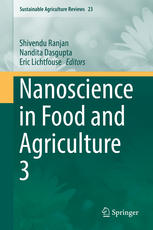

Most ebook files are in PDF format, so you can easily read them using various software such as Foxit Reader or directly on the Google Chrome browser.
Some ebook files are released by publishers in other formats such as .awz, .mobi, .epub, .fb2, etc. You may need to install specific software to read these formats on mobile/PC, such as Calibre.
Please read the tutorial at this link: https://ebookbell.com/faq
We offer FREE conversion to the popular formats you request; however, this may take some time. Therefore, right after payment, please email us, and we will try to provide the service as quickly as possible.
For some exceptional file formats or broken links (if any), please refrain from opening any disputes. Instead, email us first, and we will try to assist within a maximum of 6 hours.
EbookBell Team

5.0
108 reviewsThis book is the third volume on Nanoscience in Food and Agriculture, published in the Sustainable Agriculture Reviews series. In this book we present ten chapters describing the synthesis and application of nanomaterials for health, food, agriculture and bioremediation.Nanomaterials with unique properties are now being used to improve food and agricultural production. Research on nanomaterials is indeed revealing new applications that were once thought to be imaginary. Specifically, applications lead to higher crop productivity with nanofertilisers, better packaging, longer food shelf life and better sensing of aromas and contaminants. These applications are needed in particular in poor countries where food is scarce and the water quality bad. Nanotechnology also addresses the age old issue of water polluted by industrial, urban and agricultural pollutants. For instance, research produces nanomaterials that clean water more efficiently than classical methods, thus yielding water for drinking and irrigation. However, some nano materials have been found to be toxic. Therefore, nanomaterials should be engineered to be safe for the environment.